I am not sure how many people have heard the name of Henry Maxwell as there is not too much information on the internet even it has a long history with very few peers. The reason is its mere existence does not attract many coverage of the media. It has a website, but with very little information, even bespoke service is directed to Foster & Son because both share same bespoke team.
If there is any difference between these two shoemakers, it is Foster & Son focus on shoes, and Henry Maxwell boots. But this line is not strict and customers always can have what they want on either label, that is how it is called bespoke in the first place.
Speaking about West End bespoke shoemakers in London, John Lobb St. James is king of the kings, then follows George Cleverley, but who comes next? Many people, even shoe enthusiasts may tongue knot, well, it may be, eh, who?
The correct answer is Foster & Son or Henry Maxwell depending on which name you prefer. When Henry Maxwell emerged into Foster & Son needs my investigation, but the reputation among insiders is impeccable.
The logo of Foster and Son, a boot on top of a fox is regarded the most classic logo in shoemaking industry.
Why is Foster & Son more known than Henry Maxwell? Because it has Ready to Wear line made by Crockett & Jones for years, and it built its own factory in 2019 to release a collection comparable with Edward Green quality wise.
Sadly the project did not work out and fell apart in 2021 during the pandemic, and even the collection made by Crockett & Jones vanished as well.
This pair is not made for me and I bought from Ebay second handed. Luckily it fits my feet.
Let us have a look at this pair.
Pattern
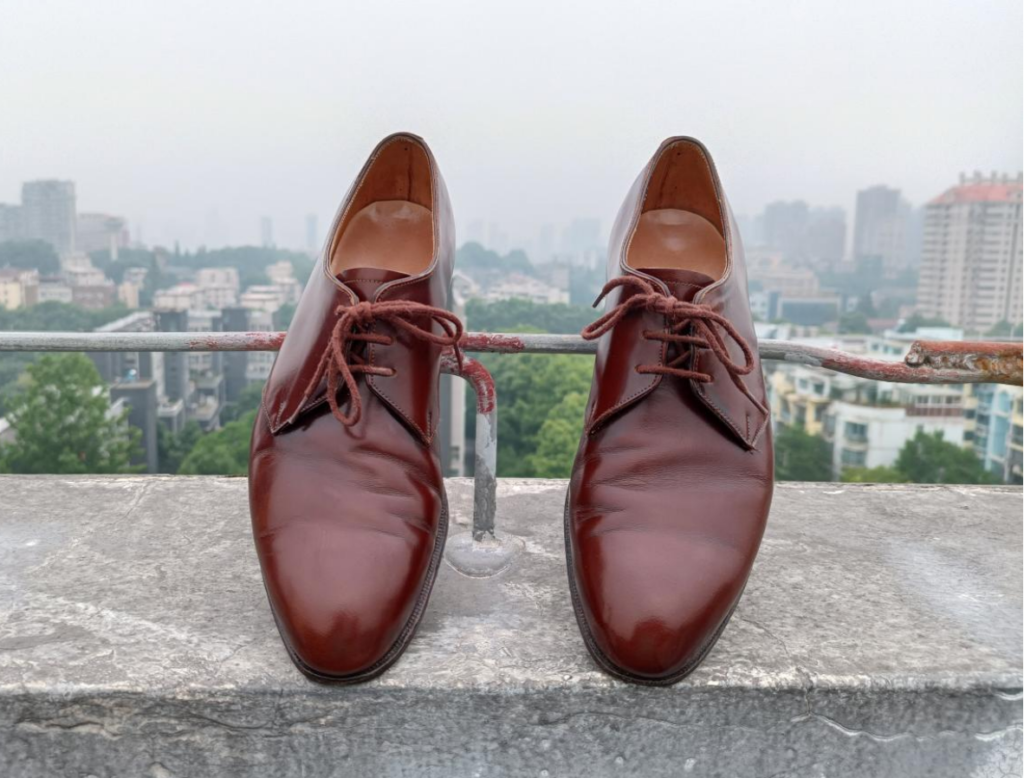
Plain toe derby with three eyelets.
Bespoke shoes have two extremes, on the end, the design is so innovative even eye-spicy sometimes, on the other end, it is too normal, even more normal than the most boring Ready to Wear shoes. This one is the latter, nothing special at all.
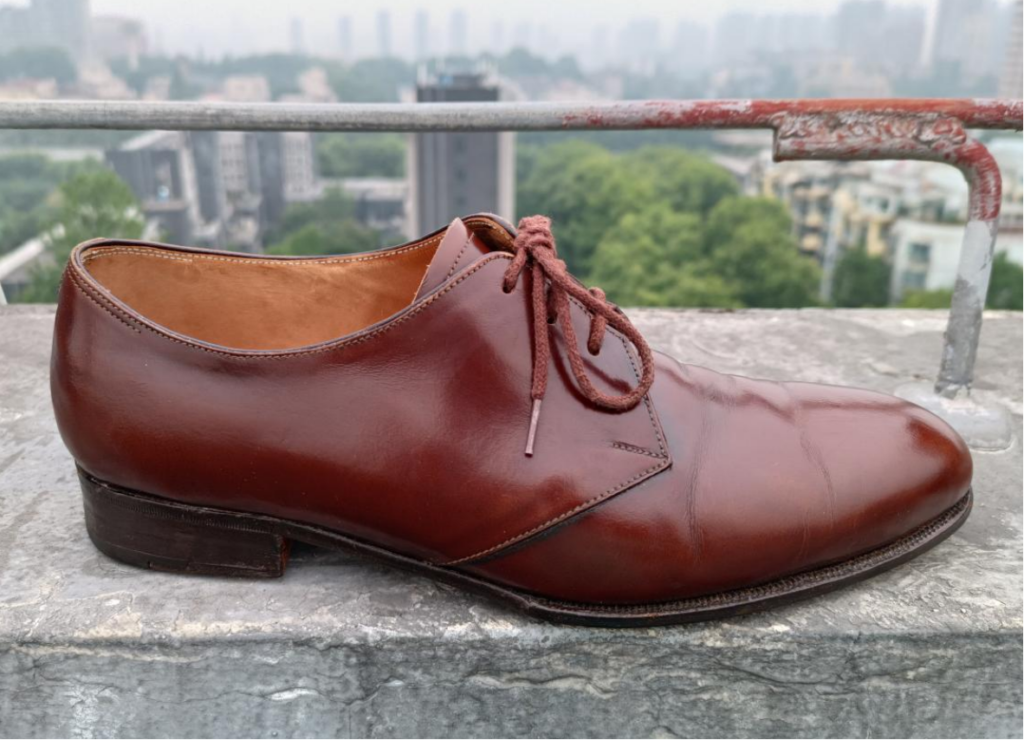
The two ears forming derby shape are not rarely seen as well. I don’t think this model was invented by Henry Maxwell.
Welt
It is not easy to come to conclusion on bespoke shoes as meeting the customer’s requirement is the highest priority. But there is a default feature among west end bespoke shoes which is sleek leather sole.
Question, what the relationship between welt and the thin leather sole?
First, to achieve sleek sole does not allow for thick welt, second, the welt stitch density should be proportional to the thickness of the sole. The ratio is a open secret to well trained English bespoke shoemakers. If overemphasizing stitch density while the sole is thick and rough, the harmony disappears and the shoes are not beautiful any more.
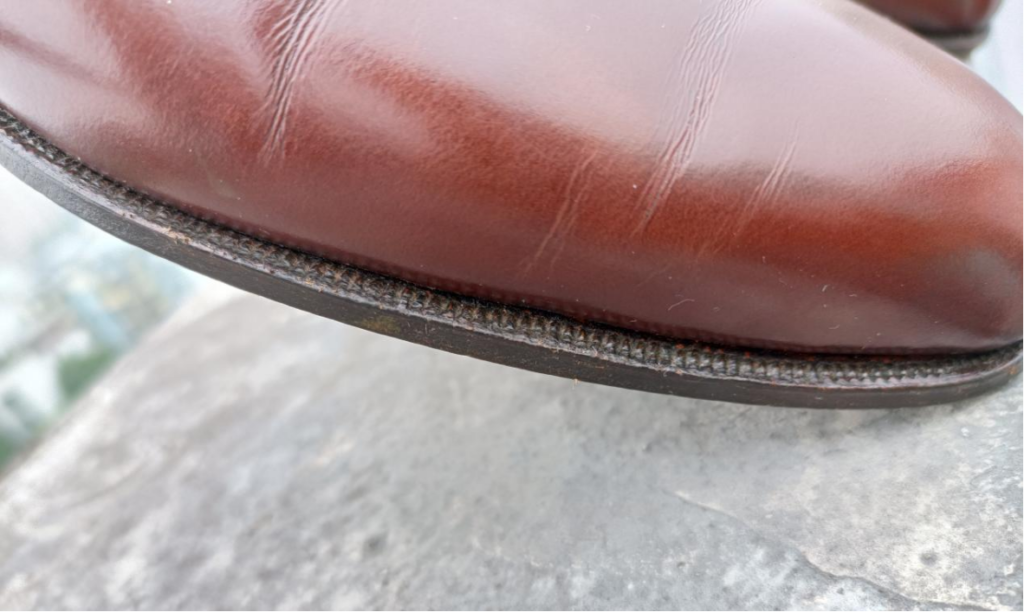
Remember the ration of this pair, you can regard it as the textbook. For the established shoemakers, it is so intuitive t skive the leather to a certain thickness and a most handy fudge wheel. Nothing to think about and this is heritage.
The purpose of the sleek and think leather sole is the casual class is screaming (silently) I am rich, I don’t need to walk, I don’t care of cost of resole. I know it sounds disgusting in today’s world, but it is how it become the norm.
I am not a fan of sleek sole as I am short and need a thick sole to heighten me a little. Rubber sole and leather sole are both OK to me and maybe rubber sole wins a bit currently.
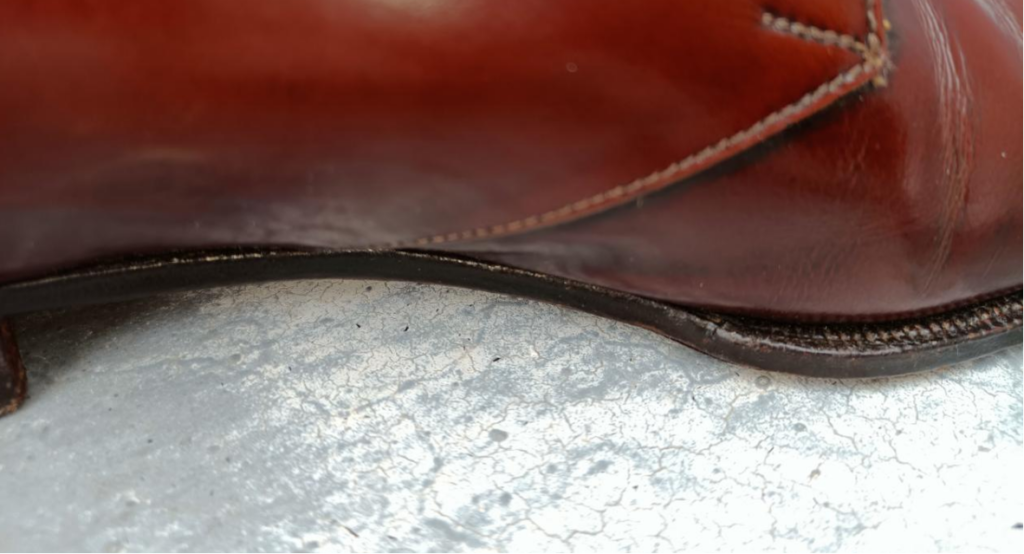
Waist, now the focal blind waist, which Gaziano & Girling introduced from bespoke to its Ready to Wear (only in its Optimum collection), is the default feature of West End bespoke shoes as well.
Last

Everyone can tell from the first sight this pair is English, but why? The pattern is universal, and the lasts of English shoes and Spanish shoes are so close. But the feeling is so intuitive, the proportion, the ration of toe length and width are so classic.
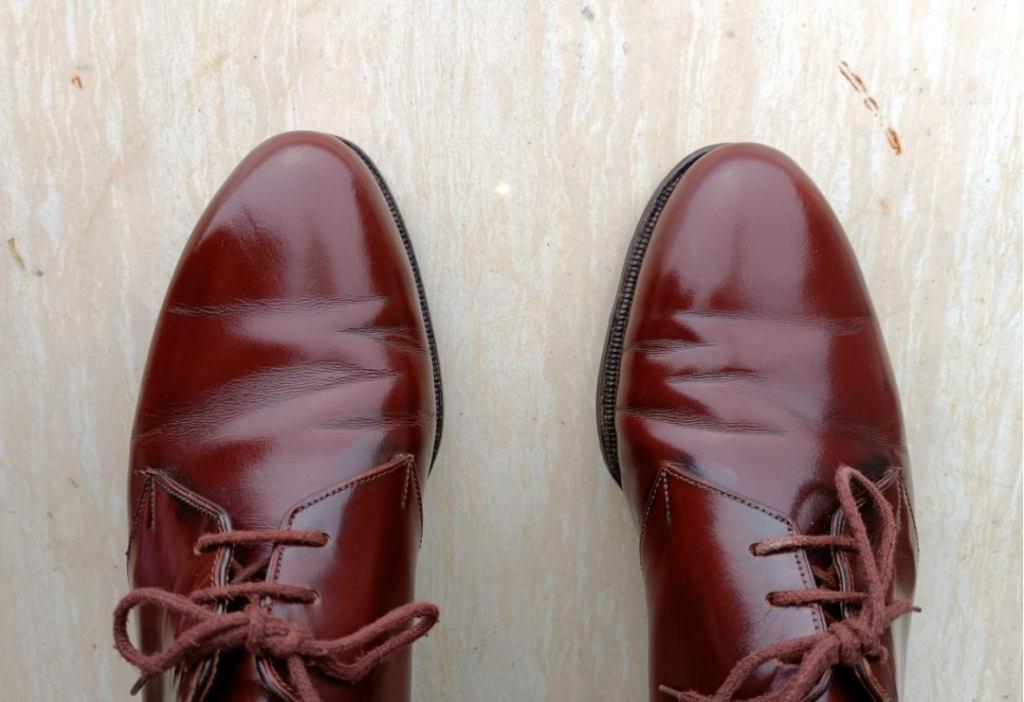
The toe shape is also very English, not too round nor too blunt, neither too sharp, and is so alike the toe of that pair of Poulsen Skone.
Leather
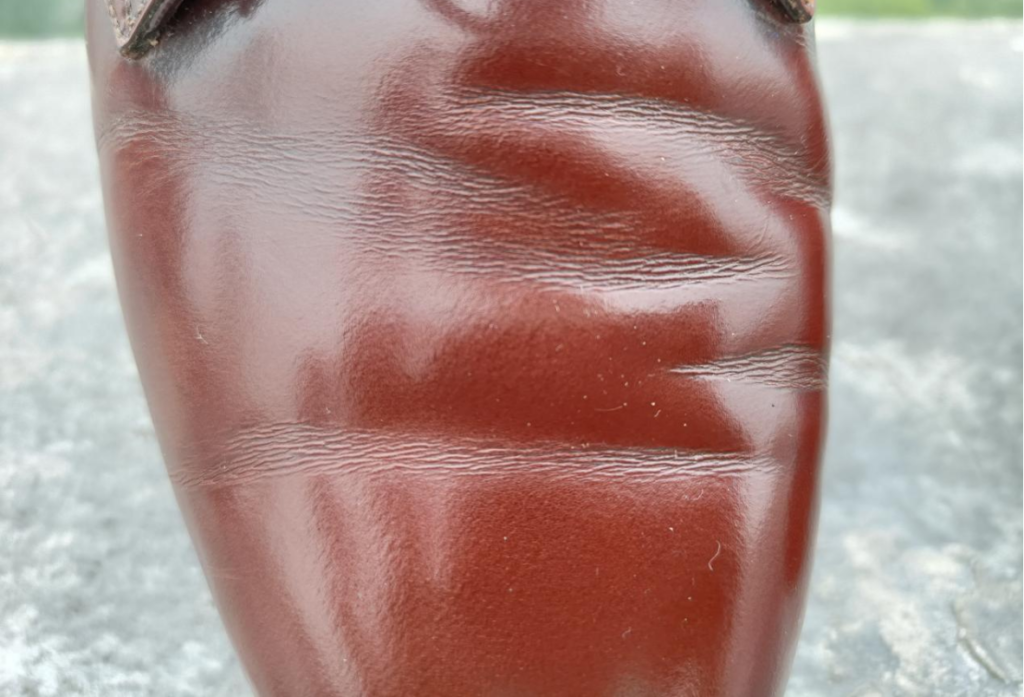
What the hell? This is bookbinder leather?
I have received a lot of questions like this: I love this pair of Loake, is it bookbinder leather? if yes, I pass. Is this pair of Church’s bookbinder leather?
I don’t know where and how they got the name of bookbinder, and avoided it like it is a disease.
The biggest disadvantage of bookbinder is its durability, the plastic top layer cracks and peels off which cannot be undone or repaired. And its strength is also obvious, shining and water proof.
To untrained eyes, or in unworn condition, it is super hard to distinguish bookbinder with shell cordovan. The difference is the fine crease is only seen on bookbinder not shell after wear.
I had the stage of hating bookbinder to the utmost level, now I become a little more tolerant, but still not prefer. Why? Because a girl said to me I like it shining. It is as simple as that, if shell cordovan is not so expensive and rare, functionality speaking, is this point the love? Second, we love to talk durability of welted shoes, but among so many shoe enthusiasts I met, not a single one make a good example that utilize his shoes to a good extent. If you cannot wear a pair of shoes for 10 years because of your fickleness, why you demand a pair of shoes should last 10 years?
I have several pairs of bookbinder shoes, among a.testoni, Lottusse, Hanover, Church’s, and to be fair, the fineness of the crease is not bad. But this one is the best as the first sight missed me that it is bookbinder! I dare say that no one can tell I am wearing a pair of bookbinder if not closely check its crease which is impossible to do under normal circumstance.
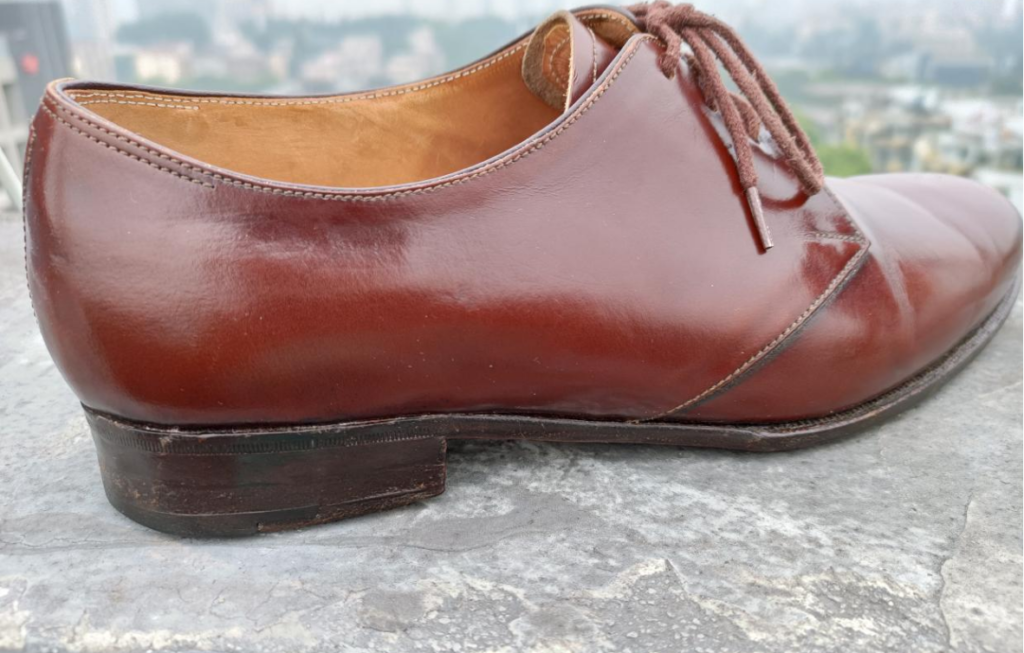
For the area which does not require flexibility, bookbinder is not a bad choice, shining and great resistance to scuff.
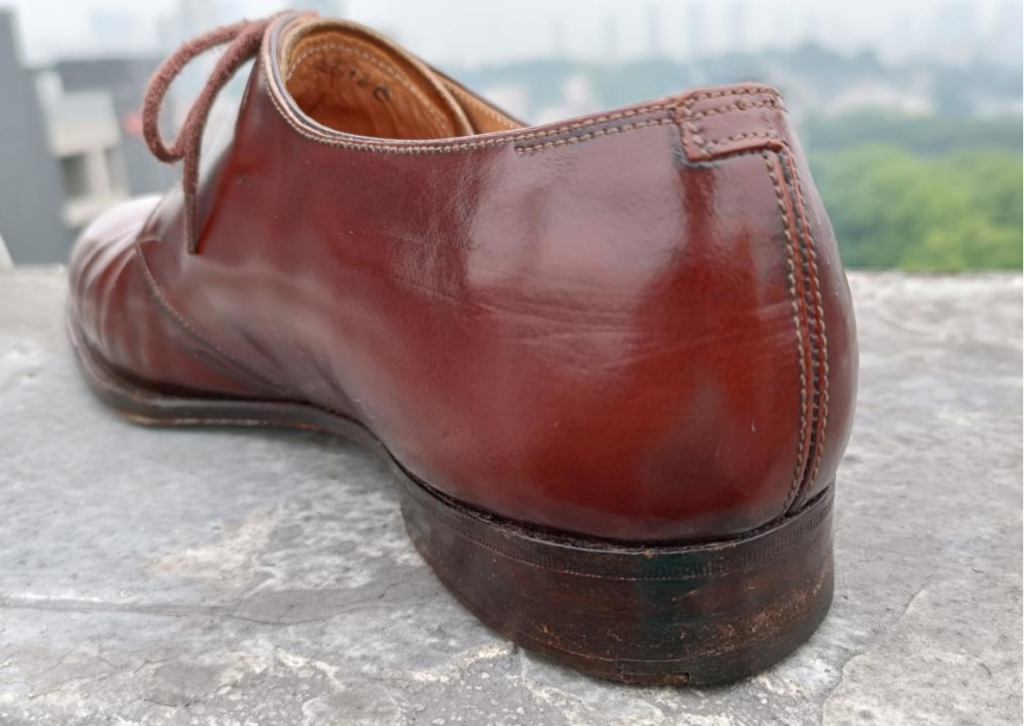
But if the vamp is chosen to be calf, how to mix and harmonize the transition of two textures needs more efforts and inspiration.
Outsole
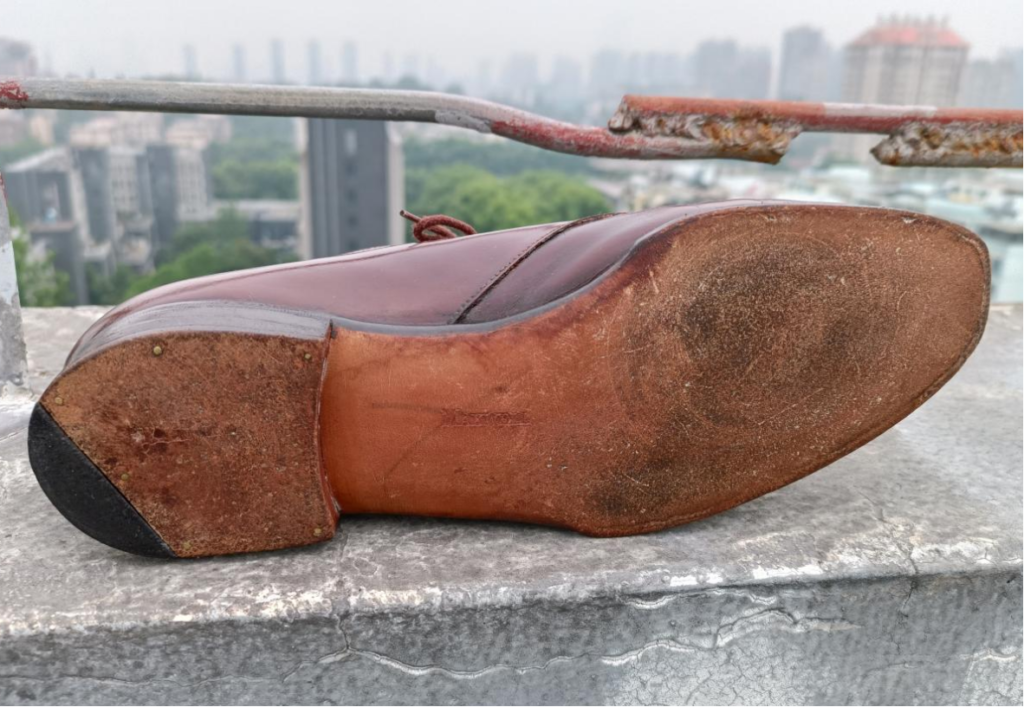
Another content of textbook. I feel quite strange that the ratio between welt stitch density and sole thickness is followed in Ready to Wear, the waist is seldom seen. Indeed Gaziano & Girling introduced fiddleback waist into Ready to Wear, but fiddleback is not so common on bespoke shoes, at least not in my experience (glancing on the internet). TLB Mallorca may have the narrowest waist in Ready To Wear, however, it does not depict harmony or understatement. In that sense, it seems John Lobb Prestige collection inherits the classic waist the best.
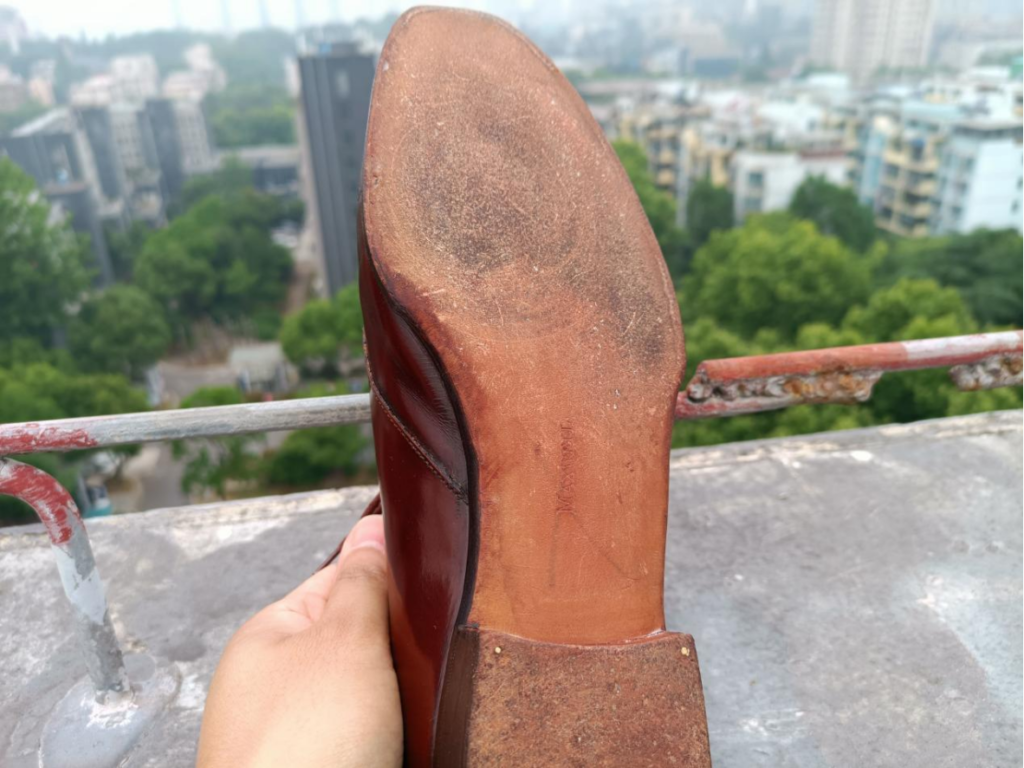
So comes to my conclusion that the narrowness of the waist is not the main difference between bespoke and Ready to Wear shoes, but the transition. American shoemakers used to made Spade Sole to emphasize the transition with a sharp corner. The round and usual transition on English shoes manifests what low profile means. The English cut pursues masculine feeling while the shoes never ask for that, strange.
A stamp of logo Henry Maxwell is on the waist of the leather sole, the same as LOBB of John Lobb St. James.
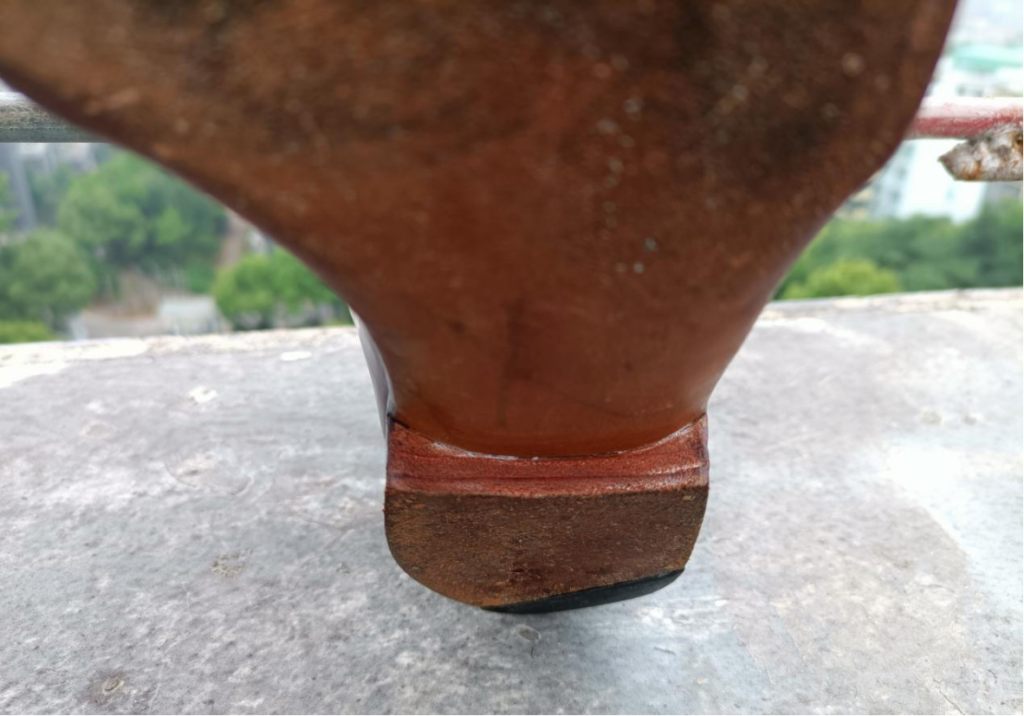
Maybe quite few people looked at shoes from this angle, this pair feels quite low, I mean the height of the heel. But in fact it is normal height, just because the stacked leather matches the beveled leather sole .
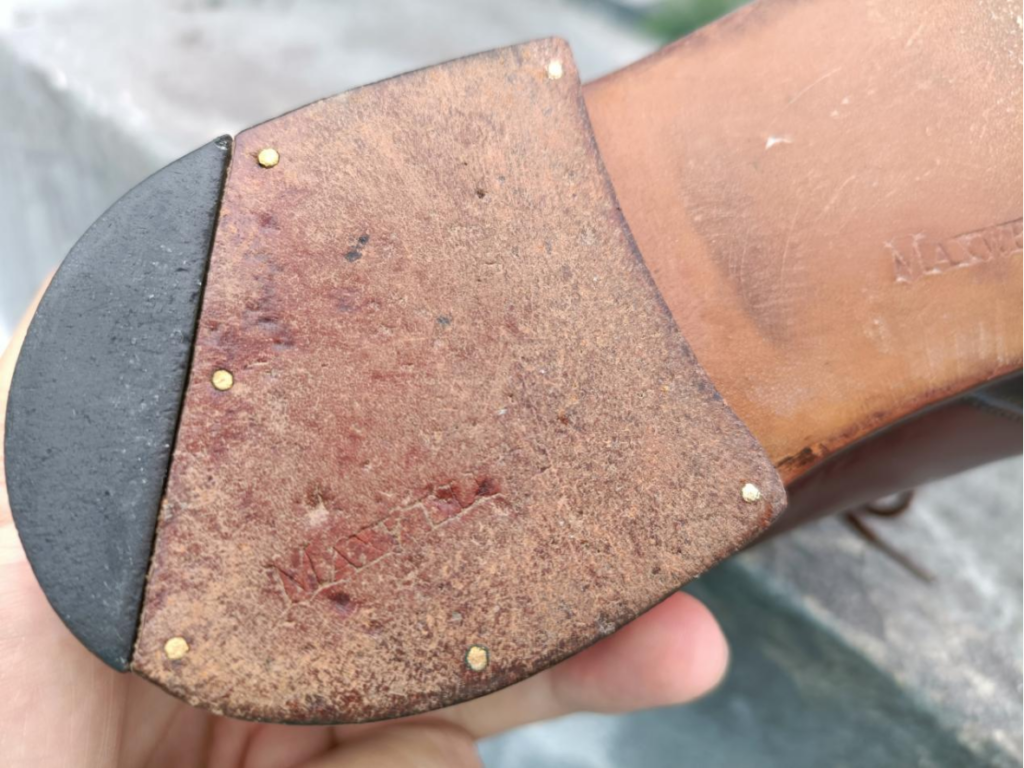
The layout of copper nails is not very impressive, the frail feeling is different from others, but to be the brand iconic is not easy. The logo is also stamped on the heel top, the leather part, unlike most brands on the rubber part. Great idea.
Details
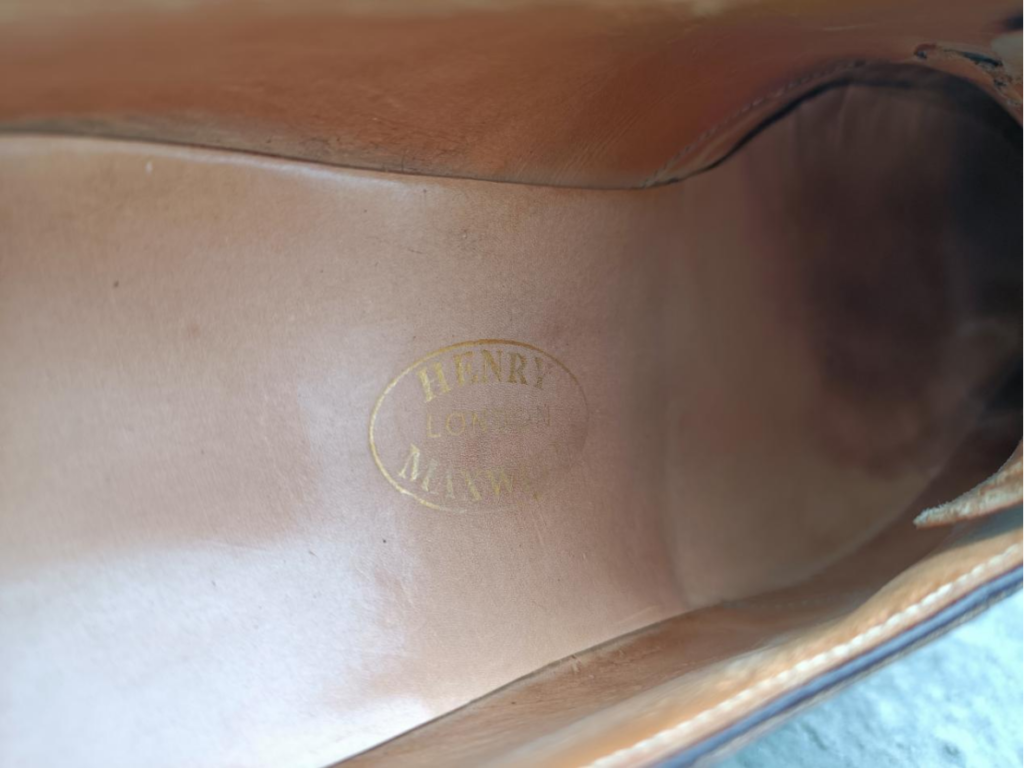
Full length sock lining without cushion on the heel. So many people care so much about the brand and the social status it represents, I suspect that the price of this pair would drop more than 90% if there is no logo on the sock lining.
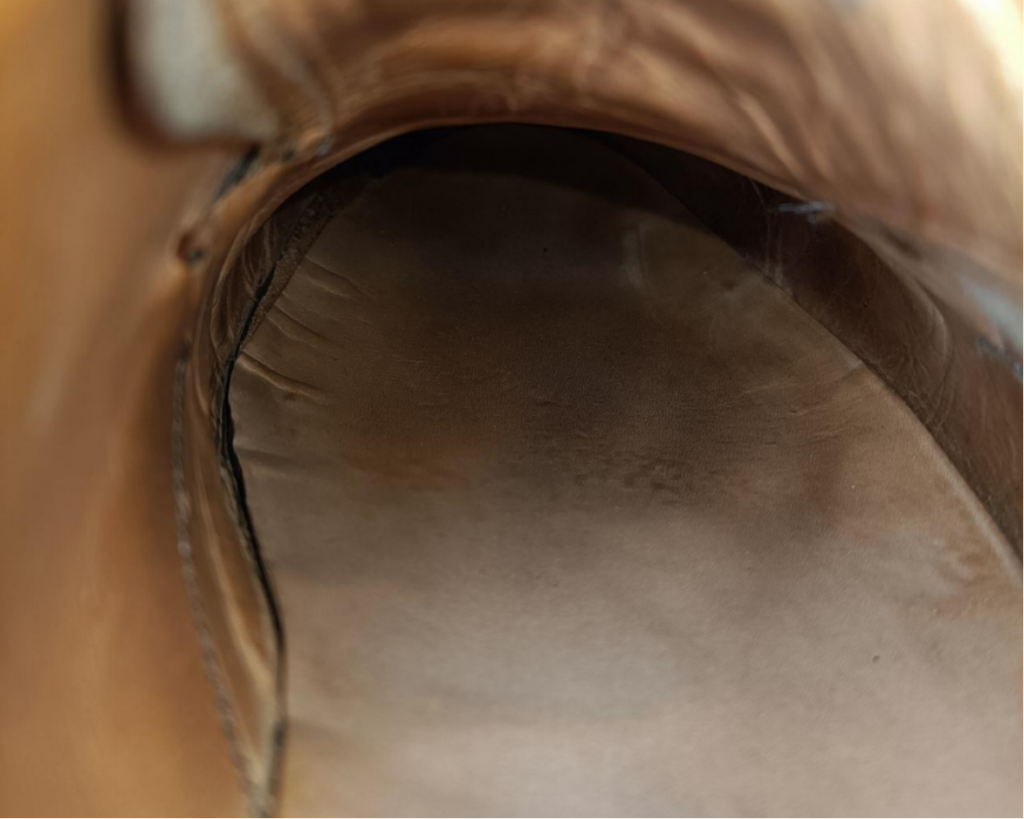
Look at the front end of the sock lining, it does not match the insole outline.
Many know that Italian shoes, even bespoke shoes are not very fine, English shoes are, but only for the outside, inside of the shoes are still “handmade”, if you know what I mean.
Heel lasting

I think heel lasting will be the next focal point of shoemaking. What is the current one? Outsole. But the difference is smaller and smaller, every brand has bevelled or fiddleback waist with closed channel sole. And even the colouring is not missed. But the heel lasting can see a whopping lot of difference. Let us see which brand will conquer the highland first.
Fit
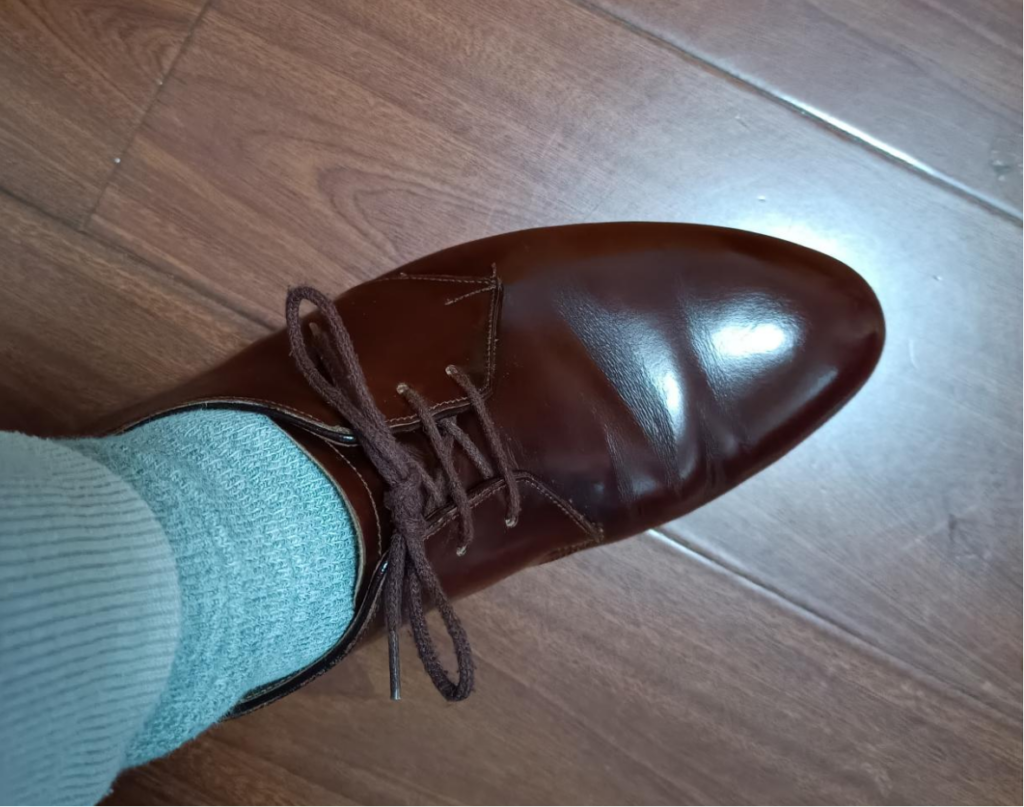
I don’t how everyone tell whether the shoes fit or not. My method is using shoehorn to put my feet in and sneak into the utmost till my little toe was hard pressed by the leather. Then move the foot backwards a little to let the leather touch but not press my little toe. Observe the gap between my ankle and the heel counter, if there is no clear gap, it is perfect. For lace up shoes, an insignificant gap is also acceptable.
I am quite tolerant about Break In, so sometimes I accept a little pressure on my little toe and very rarely to take a pair of shoe with any gap.
This pair fits me perfect at least based on my method. I don’t like wearing shoes bigger than my feet. Everyone knows big shoes can be worn but small shoes kill and if you pay attention to others’ feet, you know a lot of people wear shoes too big.
How it fits my feet is a new experience. Based on how I regard fit, the circumstance of the widest area is the controlling position, but this one is the lower area of instep.
Another feeling traditional European bespoke shoes give me is the grip feeling on heel. I think this is relevant to the cushion free sock lining and the heel lasting.
Conclusion
I cannot lie that I love this pair even reddish brown is easy to put into an outfit, but Derby is not for me and bookbinder is not my favorite.

